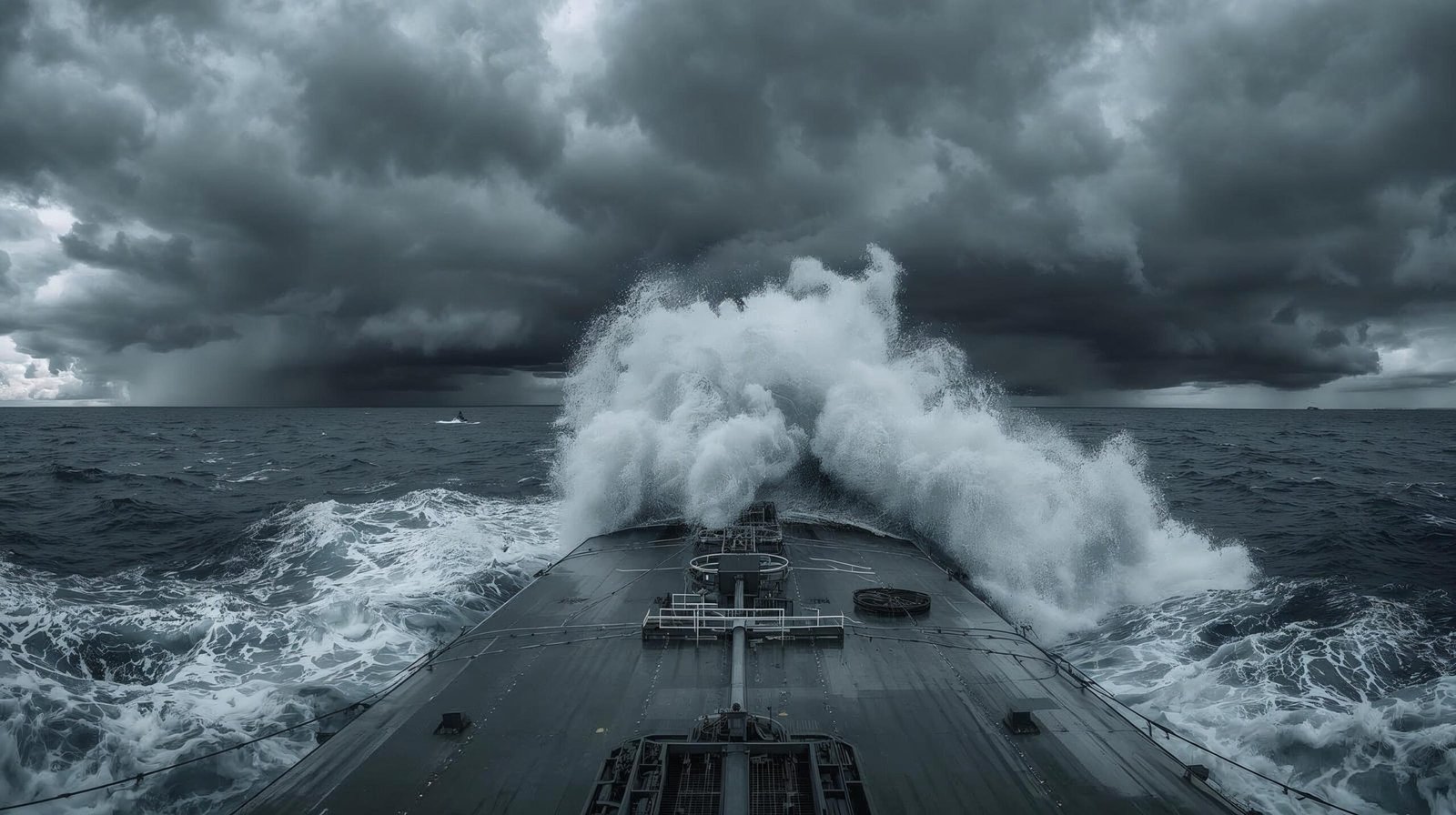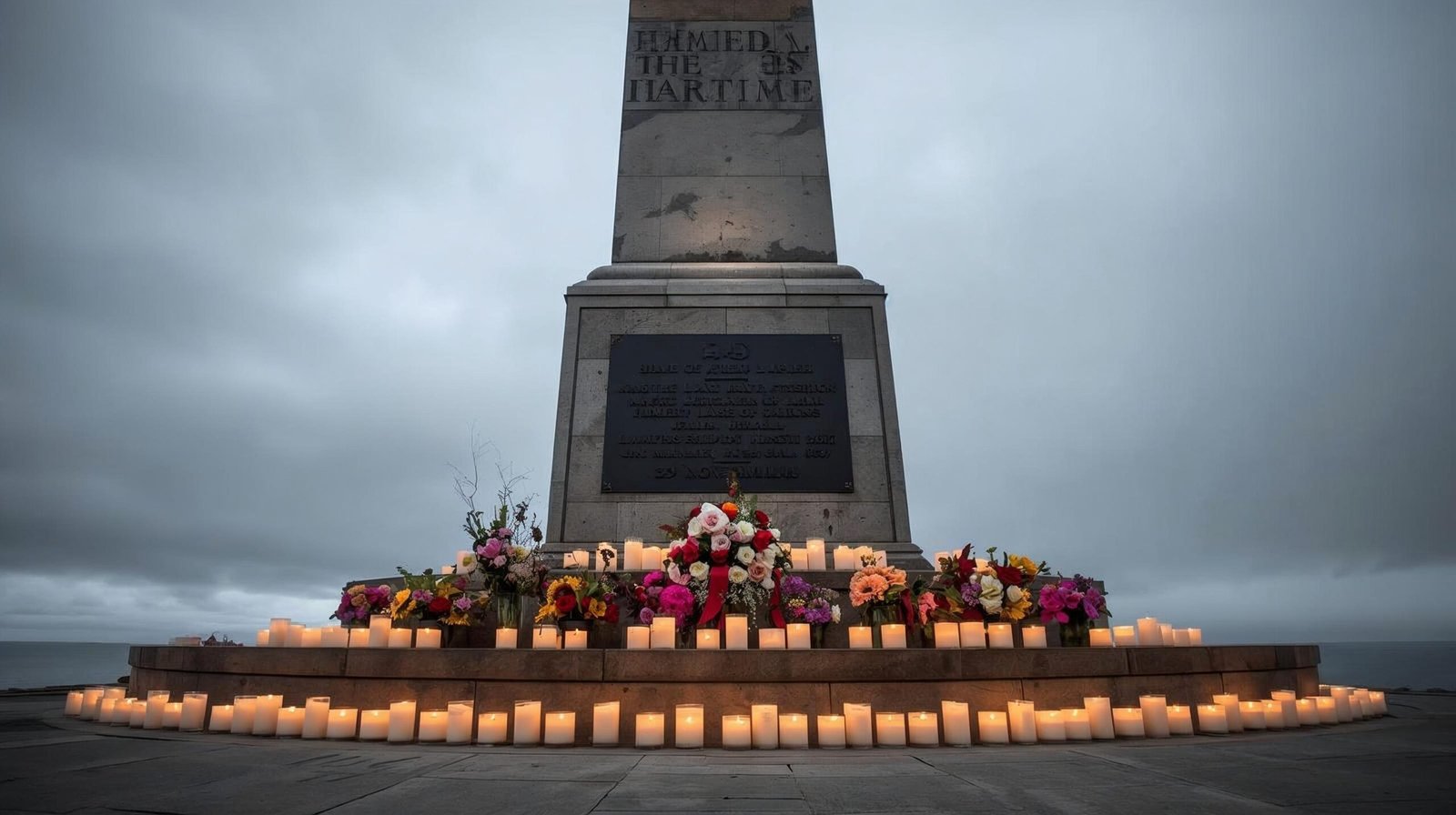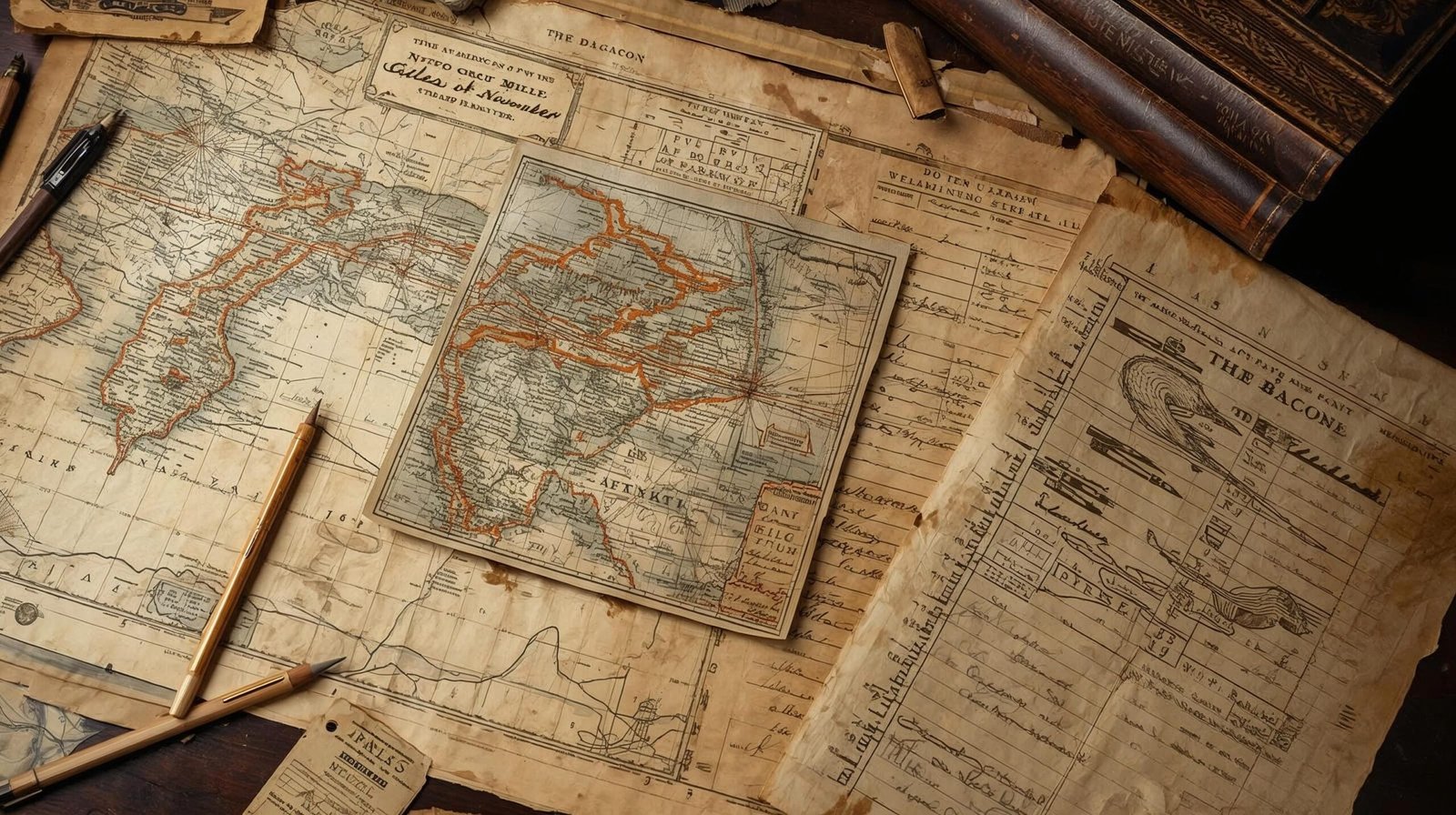The Gales of November – 7 Powerful Lessons from John U. Bacon’s Riveting Maritime Tragedy
Introduction
From the very first page, the gales of november sweep across the reader’s imagination, conjuring a storm-tossed lake, a massive freighter, and twenty-nine lives lost to an unforgiving night. In The Gales of November: The Untold Story of the Edmund Fitzgerald, John U. Bacon reconstructs the final voyage of the SS Edmund Fitzgerald, setting this maritime tragedy in both human and historical context.
The phrase the gales of november becomes more than meteorology—it is a metaphor for risk, courage, hubris, and humility. This article on ShubhanshuInsights.com explores the seven most powerful lessons drawn from Bacon’s masterpiece and reveals why the gales of november still echo through time.

1. The Stage: Building the Legend
Understanding the gales of november requires first appreciating the world that gave rise to it. The SS Edmund Fitzgerald, launched in 1958, was the largest freighter on the Great Lakes, stretching 729 feet—pride of the American fleet. She carried taconite from Duluth to Detroit, her every voyage symbolising industrial confidence and national progress.
Yet beneath this pride lay pressure. As Bacon shows, the gales of november struck during an era when shipping companies extended seasons and squeezed efficiency. Crews worked longer, ships sailed heavier, and the Great Lakes grew crueler with the advancing winter. The tragedy was born not in isolation but in the tension between commerce and caution.
2. The Men Behind the Wheel
What makes the gales of november unforgettable is not merely the storm but the men who faced it. Bacon paints vivid portraits of the 29 crew members, their lives, hopes, and courage. Captain Ernest McSorley—experienced, composed, revered—commanded with quiet confidence. Yet it was perhaps this very confidence that proved fatal when the gales of november began to roar.
In Bacon’s retelling, the crew of the Fitzgerald embody a paradox: ordinary men performing extraordinary duty under extraordinary duress. Each name etched on the memorial carries a story—one of duty, family, and faith against nature’s unyielding will.
3. Nature’s Fury: When the gales of november Became Unforgiving
At the core of the book lies the storm itself—the gales of november. Two violent weather systems collided over Lake Superior in early November 1975. Winds howled above 90 km/h, waves towered nearly 30 feet, and visibility disappeared into darkness.
Lake Superior, though fresh water, behaves like an ocean when enraged. Waves strike differently—shorter, steeper, deadlier. Bacon explains that the gales of november generated conditions no ship could endure for long: water flooding decks, equipment freezing, hulls bending.
Through Bacon’s careful reconstruction, readers witness how the gales of november transformed an ordinary journey into a desperate fight for survival—a chilling testament to nature’s supremacy.
4. Engineering, Economics, and the Risk Threshold
The gales of november also illuminate the hidden interplay of engineering and economics. The Fitzgerald was marvelously built but heavily burdened. Each ton of taconite added profit—and peril. When the ship’s freeboard (distance between deck and waterline) decreased, her margin of safety vanished.
Bacon describes how shipping companies, racing winter deadlines, risked storms to meet contracts. As the gales of november approached, warnings were issued, yet pressure to deliver prevailed. Thus, the sinking was not a single event of bad luck—it was a symptom of systemic haste.
This lesson from the gales of november transcends maritime history. It is a warning to every industry where ambition outruns prudence.
5. Mystery and Meaning: What the gales of november Left Behind
Even today, mystery shrouds what happened in those final moments. No distress call, no survivors, only fragments of communication before silence. Bacon confronts the theories—rogue waves, structural fatigue, shoaling—but ultimately admits that the truth of the gales of november rests beneath 530 feet of cold water.
This uncertainty grants the tragedy a haunting dignity. As one grieving mother said, “Only God and 29 men know what happened that night.” That haunting refrain, repeated through Bacon’s prose, ensures that the gales of november remain not only a story of loss but a testament to the unknowable.

6. Lessons in Leadership and Resilience from the gales of november
John U. Bacon is not content to recount events—he interprets them. From the gales of november emerge timeless lessons:
-
Preparation matters: Experience is valuable, but overconfidence can blind.
-
Systems fail when pressure mounts: Profit, fatigue, and weather formed a deadly triad.
-
Humility before nature: No technology can fully master the elements.
-
Memory as reform: Every tragedy can shape safer futures.
Through these principles, the gales of november becomes an education in leadership—how to act under stress, how to make decisions when information is incomplete, and how humility can avert disaster.
Bacon’s prose reminds modern readers that strength is not arrogance but awareness—the awareness that even giants can fall when winds turn unkind.
7. Why the gales of november Still Resonate
Half a century later, why does the gales of november still hold such power? Because it mirrors our world: ambition facing uncertainty, technology confronting nature, leadership tested by circumstance.
After the Fitzgerald’s sinking, Great Lakes shipping changed forever. Weather forecasting improved, radar systems advanced, safety training intensified. No comparable tragedy has occurred since. Thus, the gales of november became both a requiem and a rebirth—a disaster that saved countless lives by transforming complacency into vigilance.
For readers of history, business, or human resilience, Bacon’s work offers inspiration: even amid ruin, renewal is possible.
Additional Historical Context: The Great Lakes and Their Perils
Long before John U. Bacon’s chronicle of tragedy, the Great Lakes had earned a reputation as both the lifeblood and the graveyard of North American commerce. Stretching across five inland seas—Superior, Michigan, Huron, Erie, and Ontario—the region formed the backbone of the industrial revolution in the American Midwest. These waters carried iron ore, coal, grain, and limestone, sustaining entire cities that thrived on maritime trade.
Yet, as every sailor knew, these same waters possessed a volatility unmatched by any ocean. Storms could form within hours, winds could reverse without warning, and the shallow depth of many passages created waves that rose abruptly and crashed violently. This unique geography explains why thousands of vessels met their fate beneath the surface of Lake Superior.
It was within this dangerous theatre that Bacon’s account unfolds. The lake’s very character—a deceptive calm masking deadly potential—mirrored the story he wished to tell about human ingenuity and its limitations. His prose captures both admiration for engineering and sorrow for its vulnerability.
The Evolution of Great Lakes Shipping
In the decades following the Second World War, cargo shipping on inland waters underwent rapid transformation. New technology, larger hulls, and automated systems replaced the smaller, manually operated vessels of the early twentieth century. The Edmund Fitzgerald was the culmination of that evolution: an icon of efficiency and pride.
But progress often conceals its own perils. Every additional ton of ore, every extension of the shipping season, and every improvement in propulsion increased the potential cost of failure. When Bacon describes the vessel’s final hours, he does not only chronicle a storm; he reflects on a civilization that had come to believe that innovation could conquer nature.
This section of the story reminds readers that industrial confidence can border on arrogance. It also illuminates a broader truth: that technological advancement demands an equal rise in humility and safety standards. The loss of the Fitzgerald would later force regulators, engineers, and corporate leaders to recognise that unchecked optimism is no substitute for preparation.
Echoes from the Shore: Families and Communities
Bacon’s skill lies in turning historical reportage into intimate human narrative. While his book recounts the ship’s specifications and timeline, its emotional core lies on the shoreline—in the homes, radio rooms, and chapels of Michigan, Wisconsin, and Minnesota.
He reconstructs the anguish of waiting families, describing how wives, children, and parents clung to static-filled radio reports. Each announcement from the Coast Guard carried a mixture of dread and denial. When confirmation of the loss arrived, grief rippled across small lake towns like Duluth, Whitefish Bay, and Sault Ste. Marie.
In Bacon’s portrayal, mourning became collective. Churches filled with those who had no relation to the crew but who shared the regional identity of lake life. Bells tolled, and newspapers printed lists of names under black banners. In these quiet memorials, one perceives the dignity of working people who faced danger not for adventure, but for livelihood.
The author writes with sensitivity about how remembrance turned into ritual. Annual ceremonies, maritime museums, and folk songs ensured that the story remained alive long after the final searchlight faded. Through these human threads, the tragedy transcends its own time and becomes a timeless reflection on community endurance.

Investigations and Controversies
Following the loss, an extensive inquiry began. The United States Coast Guard, the National Transportation Safety Board, and Canadian authorities each launched separate investigations. The wreck’s location was eventually identified through sonar imaging several miles from Whitefish Point, resting in two large sections on the lakebed.
Bacon chronicles the debates that followed—over load limits, hatch maintenance, radar reliability, and weather forecasts. Some officials argued that structural fatigue had compromised the hull; others suspected the cargo hatches failed under pounding waves. A few believed the vessel had struck a shoal.
Rather than proclaiming certainty, Bacon invites readers to witness the complexity of truth-seeking. He portrays investigators, divers, and surviving mariners with empathy, recognising that each theory carried both logic and emotion. The enduring ambiguity becomes part of the narrative’s moral weight: sometimes, even the most diligent search for answers yields only partial understanding.
In the end, reforms emerged from doubt rather than conclusion. New safety codes required stronger hatch covers, more precise weather reporting, and stricter communication protocols. Bacon treats these reforms as the quiet legacy of loss—the progress born from pain.
Cultural Resonance: From Song to Symbol
The story’s reach expanded far beyond the maritime community. Canadian musician Gordon Lightfoot immortalised the tragedy in his haunting ballad “The Wreck of the Edmund Fitzgerald,” released in 1976. The song’s melancholy verses turned historical fact into cultural legend, ensuring that millions who had never seen Lake Superior could feel the chill of that November night.
Bacon acknowledges this artistic tribute while distinguishing his own work from romanticism. Where the ballad offers emotion, his book provides investigation and reflection. Yet both share the same ethical impulse—to remember, to honour, and to understand.
Over time, the narrative became woven into American folklore, appearing in documentaries, museum exhibits, and educational programmes. Ship models, recovered artefacts, and sonar images now serve as tangible connections to an event that might otherwise have faded from memory.
This cultural afterlife demonstrates the power of storytelling to preserve not merely data, but dignity. Bacon’s achievement lies in combining factual precision with literary grace, transforming maritime history into a universal meditation on human vulnerability.
Psychological Insights: Courage and Fear at Sea
A distinctive feature of Bacon’s style is his psychological realism. He reconstructs conversations between officers and crew based on log entries and survivor accounts from similar voyages. His writing explores what happens to the human mind under prolonged stress—how routine can shift into panic within moments.
He examines how leadership functions when visibility disappears and every sound becomes suspect. The captain’s voice over radio becomes a thread of stability amid chaos. Each decision carries moral weight; every command becomes a wager between survival and duty.
These psychological dimensions elevate the narrative beyond historical reconstruction. Readers sense the timeless drama of human beings confronting elements they cannot command. The story becomes an allegory for decision-making in crisis—whether at sea, in business, or in personal life.
Parallels with Modern Challenges
The events Bacon describes, though rooted in 1975, resonate strongly with contemporary themes. Climate unpredictability, technological dependence, and human overconfidence remain as relevant as ever. The storm serves as a metaphor for modern systems—financial, digital, or ecological—that operate at scales beyond full comprehension.
Just as the mariners trusted their instruments, today’s professionals trust algorithms and automation. When those systems fail, consequences ripple through society. The lesson that emerges is timeless: progress must be tempered by humility, and every triumph of design must respect natural boundaries.
By drawing these parallels, Bacon’s work appeals not only to historians but to readers interested in leadership, sustainability, and ethics. His account becomes a cautionary mirror reflecting the risks of the modern age.
Narrative Craft and Literary Strength
Beyond content, Bacon’s craftsmanship deserves recognition. He writes with disciplined clarity and understated rhythm, blending journalistic precision with poetic restraint. His sentences balance technical accuracy with human warmth, allowing both experts and casual readers to engage deeply.
He resists sensationalism; his tone is respectful rather than dramatic. This restraint amplifies rather than diminishes emotion. Readers feel the weight of silence on the lake, the metallic groan of the vessel, the final radio transmission fading into static.
Bacon’s method exemplifies the best of narrative non-fiction: research illuminated by empathy, and structure guided by moral purpose. In an era saturated with instant information, his book restores the dignity of patience and depth.

Ethical Reflections on Industry and Responsibility
One of the subtler themes Bacon explores is moral accountability. Who bears responsibility when a catastrophe results not from malice but from accumulated decisions—each rational in isolation but deadly in combination?
He invites readers to consider the collective nature of error: company executives seeking profit, regulators allowing extended seasons, captains accepting risk, and weather forecasters limited by technology. The result is not villainy but tragedy born of complexity.
This ethical reflection transforms the story into a study of organisational behaviour. It urges modern readers to evaluate how systems handle risk, communication, and authority. The lessons reach far beyond maritime policy into corporate governance and personal integrity.
The Legacy of Reform and Memory
Half a century later, the event continues to shape regional identity. Memorial services occur every November; museum exhibits preserve recovered relics, including the ship’s bell. Divers who visit the wreck describe it with reverence rather than curiosity.
Bacon concludes that remembrance is itself a form of justice. By maintaining collective memory, society honours those who perished and prevents complacency from returning. The reforms instituted afterward—stronger safety rules, improved forecasting, and respect for environmental volatility—stand as living memorials more enduring than stone monuments.
This ongoing remembrance illustrates how tragedy can foster moral advancement. What was once a moment of despair became a catalyst for awareness, discipline, and gratitude.
Personal Resonance: Reading the Story Today
For contemporary readers, encountering Bacon’s book is an act of empathy. It reminds us that progress carries weight, and that courage often consists of fulfilling duty in the face of certain danger. The narrative invites introspection about our relationship with work, ambition, and the natural world.
As one reads his measured prose, a quiet reverence develops—not only for those lost, but for the countless unnamed individuals whose labour built nations. The book speaks to anyone who has ever stood at the threshold of uncertainty and chosen to proceed despite fear.
Through such resonance, Bacon achieves what few historians accomplish: he restores human meaning to technical history.
A Final Meditation on Human Fragility and Strength
In the stillness after the storm, Bacon’s narrative turns contemplative. He writes of the lake not as an enemy, but as a mirror of human striving. The same forces that built the freighter—discipline, pride, courage—were also the forces that carried it into peril. The storm did not destroy those virtues; it revealed their limits.
What emerges is not despair but wisdom. The story teaches that greatness is measured not by invincibility but by awareness of vulnerability. To know one’s limits is the beginning of mastery.
Such meditation lends the book its enduring power. It moves beyond mere history into philosophy—an exploration of the human spirit’s unending dialogue with the elements.
Reaffirming the Value of Storytelling
At its heart, Bacon’s work demonstrates why narrative remains essential to civilisation. Facts alone cannot preserve memory; they require interpretation, emotion, and voice. Through storytelling, isolated events become shared understanding.
The endurance of this maritime chronicle testifies to the role of writers in shaping collective conscience. By revisiting past calamities with compassion and precision, they transform loss into lesson and silence into song.
Readers leave the book not merely informed but changed—aware that every technological marvel, every triumph of industry, rests upon a fragile foundation of human decision.

FAQs
Q1. What does “the gales of november” refer to?
It refers to the fierce storms that strike the Great Lakes in late autumn, particularly the one in 1975 that sank the SS Edmund Fitzgerald, inspiring John U. Bacon’s book.
Q2. Who wrote The Gales of November?
John U. Bacon, an acclaimed historian and storyteller known for capturing complex events with precision and empathy.
Q3. Is the gales of november purely a maritime story?
No. It blends history, engineering, leadership, and human emotion, making it far more than a shipwreck tale.
Q4. What lessons can business leaders learn from the gales of november?
It teaches prudence over pride, preparation over haste, and humility in the face of uncertainty—principles applicable across industries.
Q5. Where can readers obtain the gales of november?
The book is widely available through major retailers and online platforms, including Amazon and independent bookstores.
Conclusion
In conclusion, the gales of november stands as one of the most profound narratives of courage and consequence ever written about maritime history. John U. Bacon transforms a factual tragedy into a moral epic—where human will meets nature’s wrath and learns humility.
Through the gales of november, readers encounter not merely a ship’s demise but an entire era’s awakening. The legacy of the Fitzgerald endures because it speaks to all who have faced storms of their own—literal or metaphorical.
Let this reflection on the gales of november remind us to prepare better, to listen to warnings, and to honour those who sailed into the unknown so others might return safely home.
— Shubhanshu Shekhar
ShubhanshuInsights.com